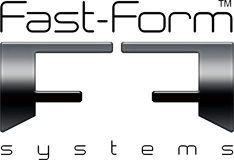An Ultimate Guide To Sheet Pile Systems
06.01.2021
Sheet piles are used to provide both temporary and permanent walls in construction projects. They can also be used to create a border to keep soil away from structures, to form a retaining wall and as excavation support, which is commonly called a cofferdam. Sheet piles are designed to interlock with one another and are installed along the perimeter of an excavation area. When they are joined, they form a sheet pile wall for support, and the capping beam adds structural rigidity and strength and is often used to fix handrails to in the case of riverside beams. Permanent sheet piles are installed using vibratory hammers. Sheet piles provide water and soil retention and are commonly made of steel, though on smaller projects composite materials are sometimes used. Carry on reading our ultimate guide to sheet pile systems to find out more.
How sheet piles work
Sheet piles provide a high level of retention, meaning that the foundations of the structure they are used to support is firm. If a portion of land or water needs to be held back, steel sheet piles are used to withstand any damage.
One of the most common uses of sheet piles is when the foundations are being built for high rise buildings. When earth is removed at deep depths, terrain begins to emerge and would collapse if not held back. The sheet piles are integrated side by side, creating a retaining border that can withstand pressure. The soil is therefore kept away from the structure being built. Another very popular use is for flood defence works and Fast-Form’s system is particularly good for this application, sheet pile walls are often used to raise the height of an embankment at a riverside and are then backfilled to form a stable bank, before a concrete capping beam is cast on the top to add strength.
Advantages of using sheet pile
As well as providing core stability and strength, there are numerous advantages of using sheet pile systems:
- They are reusable and recyclable
- They can form temporary or permanent structures
- They come in a variety of shapes and sizes
- They last for a long time both above or underwater, with little maintenance required
- The joints can withstand high levels of pressure.
Types of Sheet Pile
There are a few different types of sheet piles including timber sheet piles, reinforced concrete sheet piles and steel sheet piles. Timber sheet piles are not used as frequently now, mainly as they are only suitable for resisting light pressures and of course eventually breakdown.
Reinforced concrete sheet piles are manufactured using precast concrete and tend to have tongue-and-groove joints. Due to the material they are made from, this type of sheet pile is very heavy and bulky, and best-suited for river embankments and canals.
Steel piles are the most commonly used. The steel sections are made with an interlocking system, which means there is no gap between each part, allowing for a continuous wall. Steel has good resistance when it comes to driving forces, has excellent water tightness and has long life spans both above and below water.
The Fast-Form sheet pile capping beam formwork system
Fast-Form sheet pile capping beam systems are used to form a retaining beam or wall along the top of sheet piles. It is the only system worldwide that can cope with everything from one system, including radius and landside formwork. The beams can be designed to any size that you require, and we offer a bespoke service to suit both your needs and your budget.
Unlike other formwork methods, the Fast-Form system not only forms the soffit of the sheet pile capping beam, but also the formwork to both sides. Providing the framework and the support within one system. If you would like to know more about our unique sheet pile system, please contact us today by emailing info@fastformsystems.com.



